15 years one-stop China custom CNC machining parts factory
 650 |
Published by VMT at Aug 28 2023
650 |
Published by VMT at Aug 28 2023
What is Metal Polishing?
Metal polishing is a surface finishing process that involves the removal of imperfections, scratches, and roughness from metal surfaces to achieve a smooth, reflective, and aesthetically pleasing appearance. This technique enhances the surface quality of metals while also improving their corrosion resistance and cleanliness. Metal polishing is utilized across various industries, including automotive, jewelry, electronics, and architecture, to elevate the aesthetics and functionality of metal components. The process involves using abrasive materials, compounds, and specialized equipment to achieve the desired level of shine and finish on different types of metals.
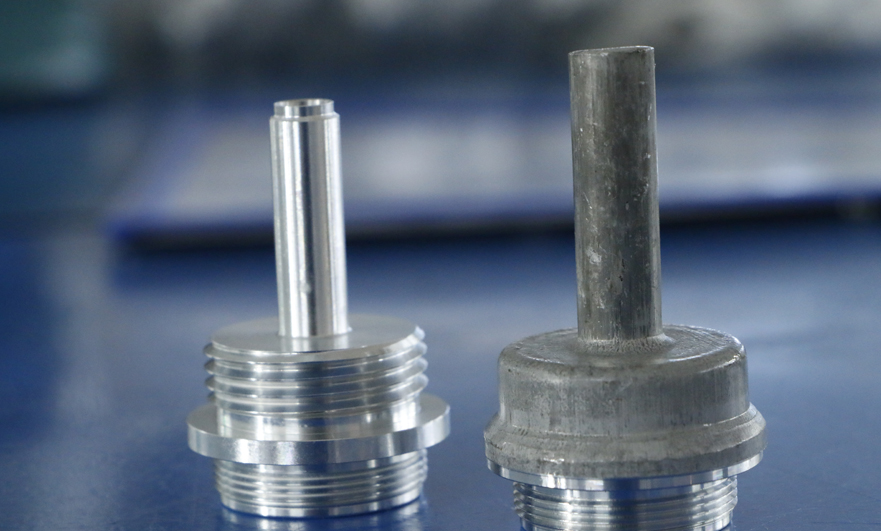
Why Choose Metal Polishing? Can Plastic be Polished?
Metal polishing offers numerous benefits, making it a popular choice for enhancing the aesthetics and functionality of metal components. It's worth exploring why metal polishing is preferred and whether the same technique can be applied to plastics.
Advantages of Metal Polishing
Aesthetic Enhancement: Metal polishing transforms rough and dull surfaces into smooth, reflective, and visually appealing ones, adding value to the finished product.
Corrosion Resistance: Polishing removes surface imperfections that can trap moisture and lead to corrosion, extending the lifespan of metal components.
Cleanliness: Polished surfaces are easier to clean and maintain, making them ideal for industries with strict hygiene standards.
Surface Hardness: Depending on the polishing process, the surface hardness of metals can be increased, improving wear resistance.
Light Reflection: Polished metals exhibit better light reflection, making them suitable for applications requiring light redirection or reflection.
Polishing Plastics
While the primary focus of polishing is on metals, certain plastics can also undergo a similar process. However, plastic polishing involves different techniques due to the material's distinct properties. Plastics can be mechanically polished or chemically treated to achieve a smoother surface and improve transparency. Not all plastics respond well to polishing, and the success of the process depends on factors like the plastic type, surface texture, and desired outcome.
Conclusion
Metal polishing offers a range of benefits, from aesthetics to enhanced functionality and durability. While plastics can also be polished using specialized methods, the techniques and considerations vary. Understanding the unique characteristics of both materials allows industries to make informed decisions about surface finishing for their specific applications.
6 Polishing Aluminum Advantages
Polishing aluminum offers a range of advantages that contribute to its popularity in various industries. Here are some key benefits:
Enhanced Aesthetics: Polishing aluminum surfaces creates a sleek and reflective finish that enhances the metal's visual appeal. It transforms dull and rough surfaces into smooth, lustrous ones, adding a touch of elegance and sophistication to aluminum components.
Improved Cleanliness: Polished aluminum surfaces are easier to clean and maintain. The smooth finish prevents dirt, grime, and contaminants from adhering to the surface, making cleaning routines more efficient.
Corrosion Resistance: Polishing removes surface imperfections and micro-roughness, reducing the areas where corrosion can initiate. This improves the metal's resistance to environmental factors, extending its lifespan and reliability.
Surface Hardness: Depending on the polishing process, the surface hardness of aluminum can be improved. This can enhance the metal's resistance to wear and abrasion, making it suitable for applications that require durability.
Light Reflection: Polished aluminum surfaces have excellent light reflectivity. This property makes them valuable in applications where light redirection, reflection, or precision optics are necessary.
Uniform Appearance: Polishing ensures a consistent and uniform appearance across aluminum components, eliminating variations that can arise from different manufacturing processes or materials.
In conclusion, the advantages of polishing aluminum encompass aesthetics, maintenance, durability, and performance. These benefits make polished aluminum a preferred choice for industries ranging from automotive and architecture to consumer electronics and aerospace.
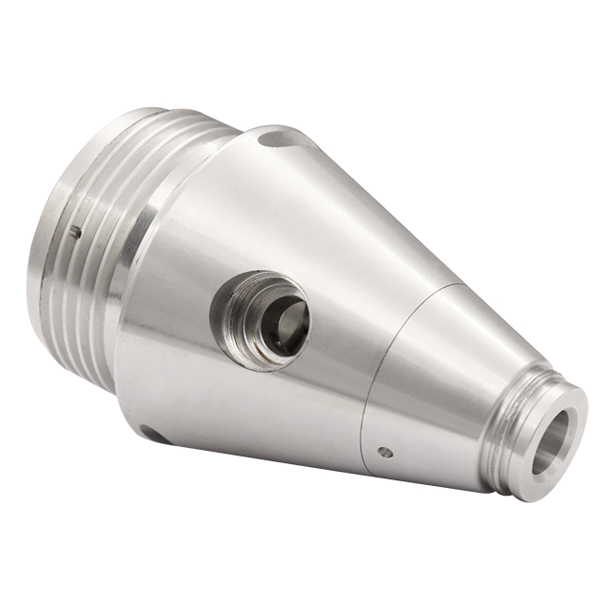
Tools for Polishing Aluminum Materials
Polishing aluminum requires the use of specialized tools to achieve the desired smooth and reflective finish. These tools are designed to effectively remove imperfections, scratches, and roughness from aluminum surfaces. Here are some essential tools commonly used for polishing aluminum:
Polishing Wheels: Polishing wheels, made of various materials like cotton, sisal, or felt, are used in conjunction with polishing compounds to create friction and achieve the desired shine on aluminum surfaces.
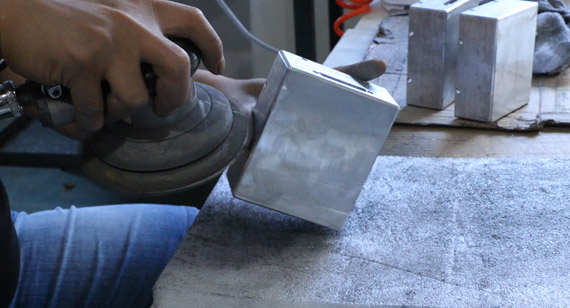
Polishing Compounds: These abrasive compounds come in different forms, such as bars or pastes, and contain abrasive particles suspended in a binding agent. They are applied to the buffing wheel to aid in the polishing process.
Sanding Pads or Discs: For initial stages of polishing, sanding pads or discs with progressively finer grits are used to remove larger imperfections and smoothen the surface.
Polishing Cloths: Soft and non-abrasive polishing cloths are used for applying polishing compounds and achieving a final mirror-like finish on aluminum surfaces.
Rotary Tools: Rotary tools equipped with various attachments, such as polishing wheels or brushes, are used for intricate or hard-to-reach areas that require precision polishing.
Polishing Machines: Large-scale projects benefit from polishing machines with motorized buffing wheels that provide consistent pressure and movement for uniform polishing.
Safety Equipment: Safety goggles, gloves, and dust masks are essential to protect the operator from potential hazards like flying debris, dust, and polishing compounds.
Cleaning Supplies: Cleaning agents, microfiber cloths, and solvents are used to remove residue and compounds after polishing, ensuring a clean and polished surface.
When using these tools, it's important to follow proper techniques and safety precautions to achieve optimal results while ensuring the safety of the operator and the environment.
Aluminum Polishing Process: Step-by-Step Guide
Polishing aluminum involves a systematic process to achieve a smooth and reflective surface. Here's a step-by-step guide to the aluminum polishing process:
Surface Preparation:
Begin by cleaning the aluminum surface thoroughly to remove dirt, grease, and contaminants that could interfere with the polishing process.
Initial Sanding:
If the surface has scratches or imperfections, start with a coarse sanding pad or disc to smoothen the surface. Gradually transition to finer grits for a smoother finish.
Apply Polishing Compound:
Apply a small amount of polishing compound onto a buffing wheel. Different compounds are available based on the level of shine desired and the type of aluminum.
Buffing Stage:
Press the buffing wheel against the aluminum surface with moderate pressure. Move the wheel evenly across the surface, allowing the compound to work its magic. Continue until the surface starts to reflect light evenly.
Inspect and Repeat:
Regularly inspect the surface to gauge progress. If any scratches or imperfections remain, repeat the buffing process with a finer compound.
Final Polishing:
Switch to a softer buffing wheel and a fine polishing compound. Polish the surface again with gentle pressure to achieve a high gloss and reflective finish.
Cleaning and Inspection:
After achieving the desired polish, clean the surface thoroughly to remove any residue from the compound. Inspect the surface for any remaining imperfections.
Protective Coating (Optional):
To maintain the polished finish, you can apply a protective coating or wax designed for aluminum surfaces. This helps preserve the shine and provides some level of corrosion resistance.
Final Inspection:
Perform a final inspection to ensure that the desired level of polish has been achieved. Make any necessary touch-ups if required.
Clean Up:
Properly clean and store the polishing tools to maintain their effectiveness for future projects.
It's important to note that the specific techniques and tools used can vary based on the type of aluminum, the level of polishing required, and the equipment available. Additionally, proper safety gear, including eye protection and gloves, should be worn throughout the process.
How to Polish Aluminum CNC Parts?
Polishing aluminum CNC parts involves careful steps to achieve a smooth and reflective finish while preserving the precision machined components. Here's a guide on how to effectively polish aluminum CNC parts:
Clean the Surface:
Start by cleaning the aluminum CNC parts thoroughly to remove any machining residues, dirt, or grease. A clean surface ensures better polishing results.
Assess the Finish:
Examine the CNC parts to identify any roughness, scratches, or imperfections that need to be addressed during the polishing process.
Choose the Right Tools:
Select appropriate polishing tools such as buffing wheels, sanding pads, and polishing compounds based on the initial condition of the CNC parts and the desired finish.
Initial Sanding:
If there are visible scratches or imperfections, begin with a coarse sanding pad or abrasive to smoothen the surface. Gradually move to finer grits for a smoother texture.
Apply Polishing Compound:
Apply a suitable polishing compound onto a buffing wheel. Choose a compound that aligns with the aluminum alloy and the desired level of shine.
Polishing Process:
Gently press the buffing wheel against the CNC parts, applying consistent pressure. Move the wheel across the surface in even motions. Keep the wheel moving to avoid overheating the aluminum.
Inspect and Repeat:
Regularly inspect the surface to monitor progress. If imperfections persist, repeat the polishing process with a finer compound and buffing wheel.
Final Polishing:
Switch to a soft buffing wheel and a fine polishing compound for the final polishing stages. Polish the CNC parts with light pressure for a high-gloss finish.
Clean and Inspect:
After achieving the desired polish, clean the parts to remove any residue from the polishing compound. Inspect the parts for any remaining imperfections.
Optional Protective Coating:
Consider applying a protective coating or wax designed for aluminum to maintain the polished finish and offer some degree of corrosion resistance.
Final Inspection:
Thoroughly inspect the polished CNC parts to ensure both the desired level of polish and the dimensional accuracy have been preserved.
Pack and Store:
Once satisfied with the finish, carefully pack the polished CNC parts to prevent any damage during storage or transportation.
By following these steps and exercising caution, you can achieve a polished finish on aluminum CNC parts that enhances their aesthetics while maintaining the precision and functionality of the machined components.
Why is Polishing Such a Crucial Step?
Polishing plays a pivotal role in various industries, from manufacturing to aesthetics, due to its multifaceted benefits. Here's why polishing is considered an essential and crucial step:
Enhanced Aesthetics:
Polishing transforms raw or rough surfaces into smooth and reflective ones, elevating the visual appeal of objects. Whether it's a metal component, jewelry, or a vehicle, polishing enhances the overall aesthetics and attractiveness of the finished product.
Surface Perfection:
Polishing eliminates imperfections, scratches, and irregularities on surfaces. This not only enhances the appearance but also ensures the surface is free from obstacles that could affect functionality or performance.
Corrosion Resistance:
Polished surfaces are less prone to corrosion. By removing microscopic roughness, polishing minimizes crevices where moisture and contaminants could accumulate, thereby extending the lifespan of materials.
Improved Cleanliness:
Smooth, polished surfaces are easier to clean and maintain. Dust, dirt, and residues have fewer places to cling to, making cleaning routines more efficient.
Functional Performance:
In industries like automotive and aerospace, polished surfaces can lead to reduced friction and enhanced aerodynamics, thereby improving the performance and efficiency of vehicles and aircraft.
Quality Assurance:
Polishing is often a final quality control step. It ensures that products leaving the manufacturing process meet the desired standards of appearance and functionality.
Customization and Branding:
Polishing allows for customization by adding unique textures, finishes, or branding elements to products. This enhances their value and distinguishes them in the market.
Restoration:
Polishing can rejuvenate old or worn surfaces, breathing new life into products and objects that may have lost their luster over time.
Precision and Detailing:
Polishing requires meticulous attention to detail. This precision translates to improved craftsmanship and reflects the dedication of manufacturers to deliver high-quality products.
In essence, polishing enhances not only the visual allure of objects but also their durability, functionality, and overall value. It's a critical step that showcases the fusion of artistry and engineering in creating products that are both visually pleasing and functionally superior.
Five Methods for Polishing Aluminum Materials
Polishing aluminum involves various methods, each tailored to achieve specific levels of smoothness and shine. Here are five common methods for polishing aluminum:
Hand Polishing:
Hand polishing involves using polishing compounds and soft cloths or pads to manually rub the surface of the aluminum. It's suitable for smaller or intricate parts and allows for detailed control over the polishing process.
Buffing Wheels and Compounds:
Buffing wheels, coupled with different polishing compounds, are used with rotary tools to create friction and remove imperfections. Coarse compounds address initial imperfections, while finer compounds produce a glossy finish.
Abrasive Sanding:
Abrasive sanding involves using sandpaper or sanding pads with progressively finer grits. This method is effective for removing deeper scratches and imperfections before moving on to polishing.
Polishing Machines:
Polishing machines equipped with motorized buffing wheels are used for larger-scale projects. These machines ensure consistent pressure and movement, resulting in uniform and efficient polishing.
Electropolishing:
Electropolishing is an electrochemical process that removes a thin layer of the aluminum surface, resulting in a smooth and glossy finish. It's ideal for complex shapes and parts that require a high level of precision.
It's important to note that the choice of method depends on factors such as the initial condition of the aluminum, the desired level of shine, the size of the parts, and the available equipment. Additionally, safety precautions and proper techniques should be followed to achieve optimal results and ensure the safety of individuals performing the polishing.
Six Major Applications of Aluminum Polishing
Aluminum polishing finds widespread application across various industries due to its ability to enhance the appearance, functionality, and durability of aluminum surfaces. Here are six major areas where aluminum polishing is commonly applied:
Polished aluminum is used extensively in automotive applications. From wheels and grilles to trim and engine components, polishing adds a sleek and luxurious look to vehicles while also improving corrosion resistance.
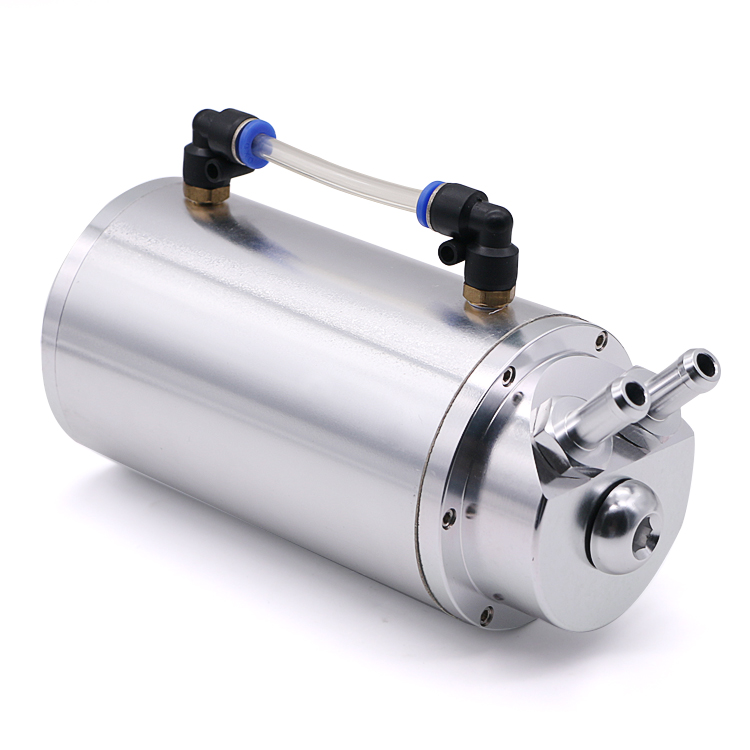
Aerospace and Aviation:
In the aerospace sector, polished aluminum is utilized for aircraft exteriors, interior fixtures, and engine components. The reflective surface helps improve fuel efficiency and withstands harsh environmental conditions.
Architecture and Interior Design:
Polished aluminum is employed in architectural elements such as handrails, facades, and decorative accents. Its reflective quality and resistance to weathering make it suitable for both exterior and interior design.
Electronics such as smartphones, laptops, and audio equipment often feature polished aluminum casings. The polished finish lends a premium look to these devices while providing durability and heat dissipation.
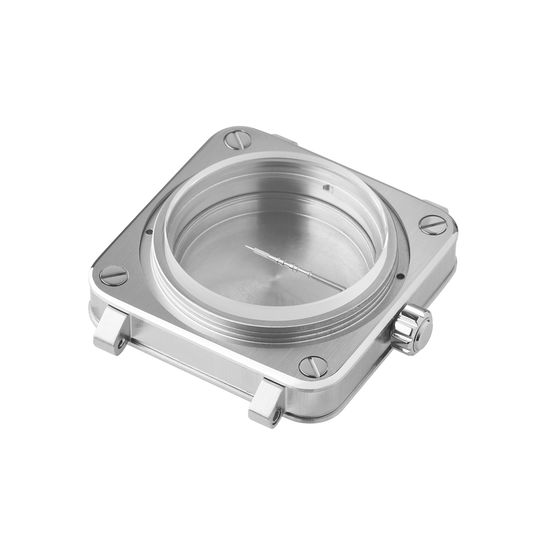
Jewelry and Accessories:
Polished aluminum is used in the creation of fashion jewelry, watches, and accessories. Its lightweight nature, corrosion resistance, and reflective finish make it an appealing choice for wearable items.
Industrial Machinery and Equipment:
Machinery parts made from aluminum, such as gear housings and panels, are polished to improve their aesthetic appeal and enhance their functionality. Polishing can also reduce friction and wear in some cases.
These applications highlight the versatility of aluminum polishing in various industries. Whether it's for aesthetics, performance enhancement, or both, the process of polishing aluminum continues to play a significant role in elevating the quality and appearance of a wide range of products and components.
Methods to Maintain the Shine of Polished Aluminum
Keeping polished aluminum surfaces gleaming requires regular maintenance and care. Here are effective methods to preserve the shine of polished aluminum:
Regular Cleaning:
Wipe down polished aluminum surfaces regularly with a soft, damp cloth to remove dust, dirt, and smudges. This prevents the accumulation of particles that can dull the shine.
Mild Cleaning Solutions:
For tougher stains or residues, use a mild detergent mixed with water. Avoid abrasive cleaners that could scratch the surface. Gently wipe and rinse the surface with clean water.
Microfiber Cloths:
Use microfiber cloths for cleaning and drying. These cloths are soft and non-abrasive, ensuring that the polished surface remains scratch-free.
Avoid Harsh Chemicals:
Steer clear of harsh chemicals or abrasive materials that can damage the polished finish. Acidic or alkaline cleaners should be avoided, as they can tarnish or corrode aluminum.
Protective Coatings:
Apply a protective wax or coating specifically designed for aluminum surfaces. This creates a barrier that shields the surface from environmental factors that could dull the shine.
Avoid Direct Sunlight:
Prolonged exposure to direct sunlight can cause fading and discoloration. Whenever possible, keep polished aluminum items away from harsh sunlight.
Soft Brushes:
Use soft-bristle brushes to clean intricate details or hard-to-reach areas. Avoid brushes with abrasive bristles that could scratch the surface.
Avoid Abrasive Materials:
Refrain from using abrasive scrubbers, scouring pads, or steel wool. These can scratch the polished surface and compromise the shine.
Regular Inspections:
Periodically inspect the polished aluminum surfaces for any signs of wear, scratches, or loss of shine. Address any issues promptly to prevent further damage.
Storage Considerations:
Store polished aluminum items in a dry and clean environment. Use soft cloths or covers to prevent dust buildup and maintain the shine.
Professional Maintenance:
For valuable or intricate items, consider professional maintenance services to restore and maintain the original shine.
By following these methods, you can ensure that your polished aluminum surfaces continue to exude brilliance and remain an appealing feature in various applications, from automotive components to decorative accents.
In Conclusion: The Brilliance of Polished Aluminum
Polished aluminum stands as a testament to the harmonious fusion of aesthetics and functionality. Through meticulous processes and careful attention, this material transforms from its raw state into a gleaming masterpiece that graces various industries and applications.
The significance of polishing aluminum extends beyond its captivating shine. It is a process that enhances the durability, corrosion resistance, and overall quality of aluminum surfaces. By removing imperfections and creating a smooth finish, polished aluminum not only appeals to the eye but also to the touch, inviting appreciation from both visual and tactile senses.
From automotive wheels that catch the sunlight to architectural accents that reflect the beauty of their surroundings, polished aluminum elevates the appearance of countless products. Its presence is felt in industries ranging from aerospace to interior design, leaving an indelible mark on both form and function.
However, maintaining the luster of polished aluminum requires diligent care. Regular cleaning, gentle techniques, and protective measures are essential to ensure that its brilliance endures the test of time. By following these guidelines, polished aluminum surfaces can continue to radiate their captivating shine, serving as a testament to the craftsmanship that shapes our modern world.
In a world where aesthetics and practicality converge, polished aluminum stands as a prime example of how beauty and function can coexist in perfect harmony. Its ability to capture attention, improve performance, and withstand the rigors of various environments showcases the enduring allure of this remarkable material.
